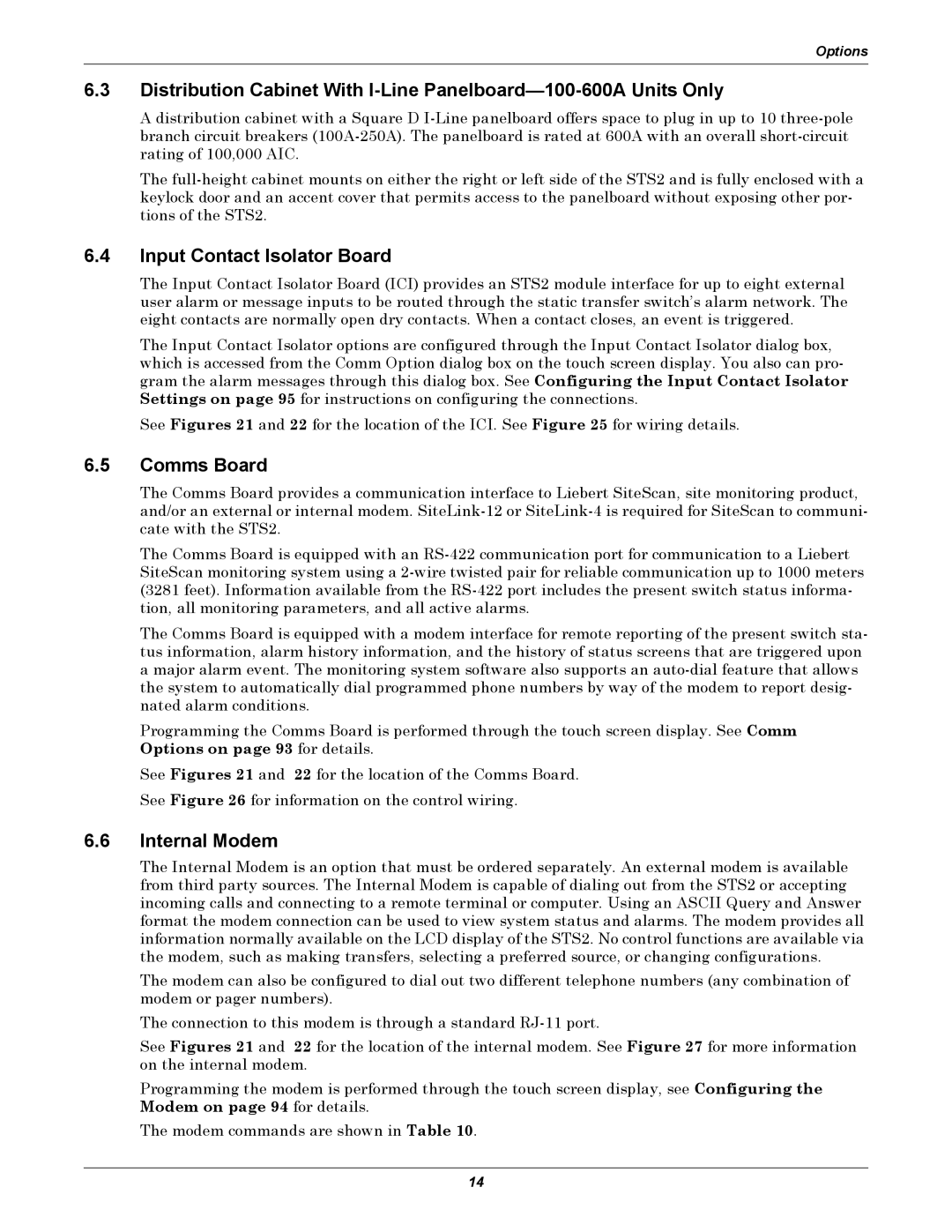
Options
6.3Distribution Cabinet With
A distribution cabinet with a Square D
The
6.4Input Contact Isolator Board
The Input Contact Isolator Board (ICI) provides an STS2 module interface for up to eight external user alarm or message inputs to be routed through the static transfer switch’s alarm network. The eight contacts are normally open dry contacts. When a contact closes, an event is triggered.
The Input Contact Isolator options are configured through the Input Contact Isolator dialog box, which is accessed from the Comm Option dialog box on the touch screen display. You also can pro- gram the alarm messages through this dialog box. See Configuring the Input Contact Isolator Settings on page 95 for instructions on configuring the connections.
See Figures 21 and 22 for the location of the ICI. See Figure 25 for wiring details.
6.5Comms Board
The Comms Board provides a communication interface to Liebert SiteScan, site monitoring product, and/or an external or internal modem.
The Comms Board is equipped with an
The Comms Board is equipped with a modem interface for remote reporting of the present switch sta- tus information, alarm history information, and the history of status screens that are triggered upon a major alarm event. The monitoring system software also supports an
Programming the Comms Board is performed through the touch screen display. See Comm Options on page 93 for details.
See Figures 21 and 22 for the location of the Comms Board. See Figure 26 for information on the control wiring.
6.6Internal Modem
The Internal Modem is an option that must be ordered separately. An external modem is available from third party sources. The Internal Modem is capable of dialing out from the STS2 or accepting incoming calls and connecting to a remote terminal or computer. Using an ASCII Query and Answer format the modem connection can be used to view system status and alarms. The modem provides all information normally available on the LCD display of the STS2. No control functions are available via the modem, such as making transfers, selecting a preferred source, or changing configurations.
The modem can also be configured to dial out two different telephone numbers (any combination of modem or pager numbers).
The connection to this modem is through a standard
See Figures 21 and 22 for the location of the internal modem. See Figure 27 for more information on the internal modem.
Programming the modem is performed through the touch screen display, see Configuring the Modem on page 94 for details.
The modem commands are shown in Table 10.
14
